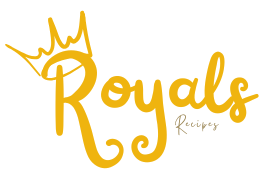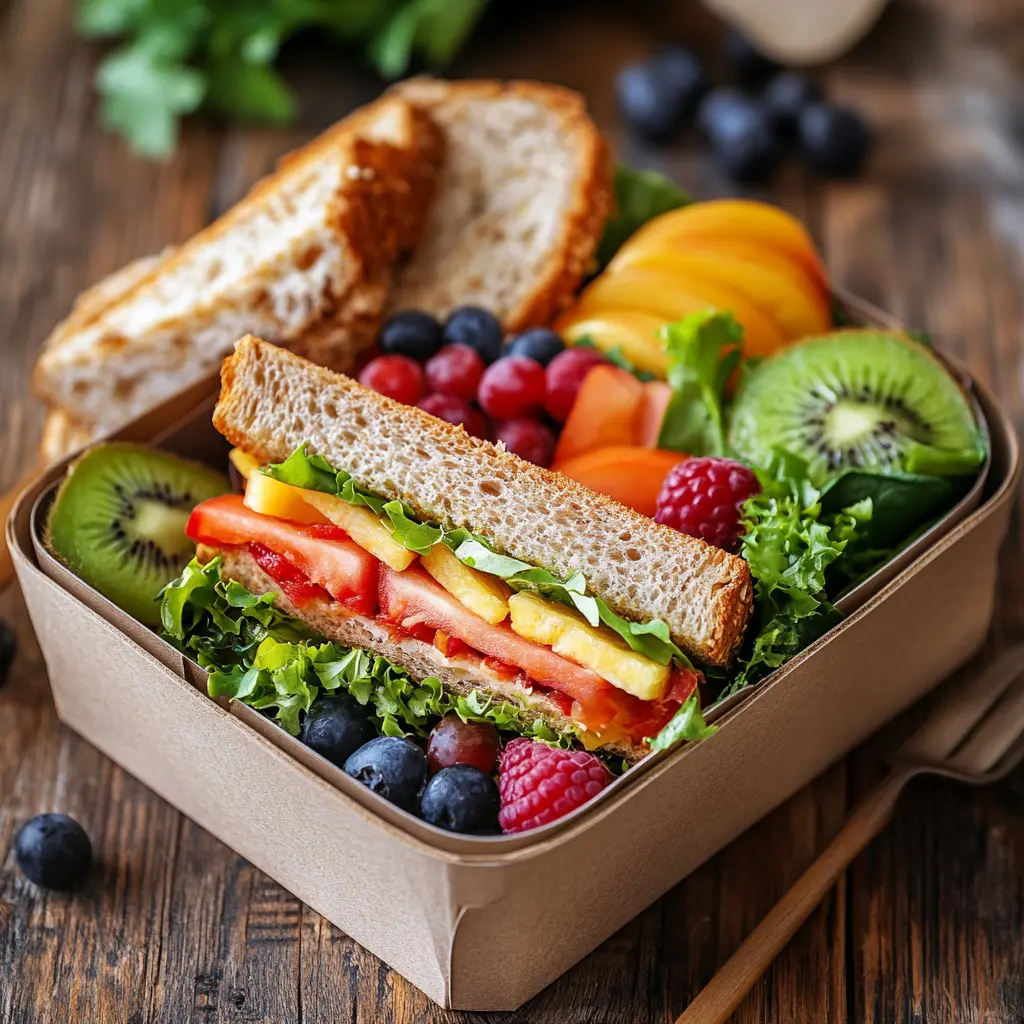Introduction
A box lunch is more than just a meal packed for convenience; it’s a thoughtful, portable solution to busy schedules and on-the-go lifestyles. Whether you’re heading to work, preparing for a school day, or planning an event, box lunches offer a practical way to enjoy delicious, nutritious food anywhere.
Box lunches have evolved far beyond the simple sandwich and chips combination. Today, they cater to a variety of tastes, dietary preferences, and occasions. With the right ingredients and presentation, they can be as gourmet as a fine dining experience or as kid-friendly as a PB&J.
This guide explores everything you need to know about box lunches, from their benefits and types to tips for packing the perfect meal. Whether you’re a busy professional, a parent, or a catering business owner, you’ll find plenty of inspiration here to elevate your box lunch game.
Benefits of Box Lunches
Convenience Box Lunch
Box lunches are the epitome of convenience. Designed for easy transportation and quick access, they fit seamlessly into busy schedules. Whether you’re rushing to work, attending school, or on a road trip, a box lunch provides a ready-to-eat meal without the need for lengthy preparation or finding a restaurant.
For businesses or event planners, box lunches streamline food service by offering a pre-packaged, individually portioned option that minimizes wait times and cleanup.
Portability Box Lunch
The compact design of a box lunch makes it perfect for on-the-go lifestyles. With everything neatly packed into one container, there’s no need to juggle multiple items. This portability makes box lunches ideal for:https://www.purewow.com/food/bento-box-lunch-ideas
- Office workers commuting to work.
- Students carrying lunches to school.
- Travelers needing sustenance on long trips.
Customization Box Lunch
Box lunches are highly customizable, accommodating a wide range of dietary preferences and restrictions. They can be tailored to include:
- Dietary needs: Vegetarian, vegan, gluten-free, or keto options.
- Portion sizes: Adjusted for kids, adults, or specific calorie goals.
- Cultural flavors: From classic American deli sandwiches to Japanese-inspired bento boxes.
This adaptability makes box lunches a hit for diverse groups and special occasions.
Cost-Effectiveness Box Lunch
Packing a box lunch at home or choosing pre-packaged options from local vendors can save money compared to eating out. It allows for cost control by purchasing ingredients in bulk and reducing food waste. For businesses hosting events, box lunches are an economical catering option compared to buffet setups.
Nutritional Balance Box Lunch
Box lunches can be designed for optimal nutrition by including:
- Lean proteins (chicken, tofu, eggs).
- Whole grains (brown rice, quinoa, whole-grain bread).
- Fresh vegetables and fruits for vitamins and fiber.
This ensures a well-rounded meal that satisfies hunger and provides energy throughout the day.
Popular Types of Box Lunches
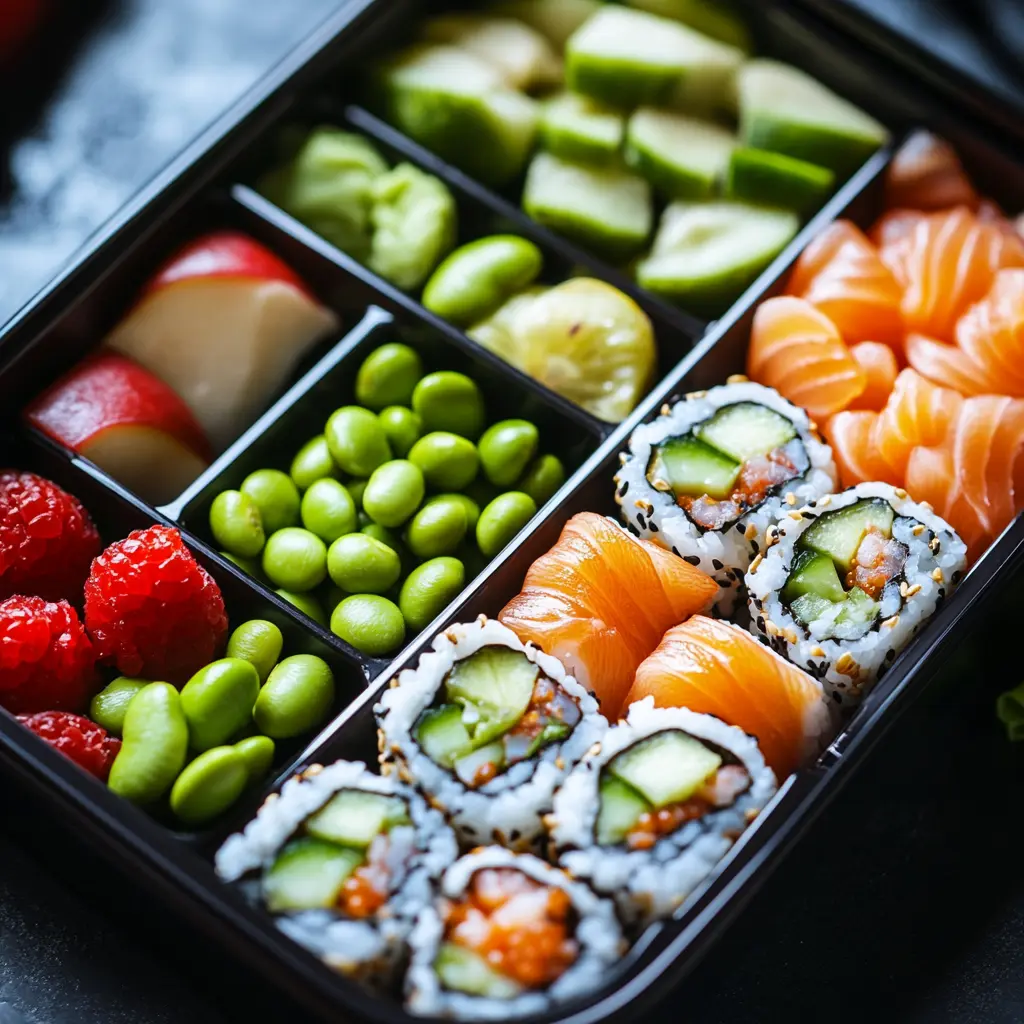
Traditional Sandwich-Based Box Lunches
The classic sandwich box lunch remains a favorite for its simplicity and versatility. These lunches typically include:
- A hearty sandwich or wrap (turkey and avocado, ham and cheese, or veggie hummus).
- Side items like chips, a pickle, and a cookie.
- An optional beverage, such as bottled water or juice.
These traditional options are ideal for office meetings, school lunches, and casual events where simplicity is key.
Asian-Inspired Bento Boxes
Bento boxes, originating from Japan, bring a creative and visually appealing twist to the box lunch concept. These lunches often feature:
- Rice or Noodles: A staple base, such as sushi rice, soba noodles, or fried rice.
- Proteins: Options like teriyaki chicken, tofu, or salmon.
- Vegetables: Fresh or pickled, such as edamame, carrots, or cucumber.
- Extras: Small portions of fruit, seaweed salad, or dumplings.
Bento boxes are perfect for those seeking a balanced, portion-controlled meal with a touch of cultural flair.
Healthy Salad-Based Box Lunches
For health-conscious individuals, salad-based box lunches are an excellent choice. Popular varieties include:
- Protein-Packed Salads: Grilled chicken Caesar, quinoa and black bean, or smoked salmon and avocado.
- Vegan Options: Kale and chickpea, roasted vegetable quinoa, or spinach and strawberry salad with almond slices.
- Dressings on the Side: Keeps the salad fresh and allows customization.
These lunches can also include a whole-grain roll or fresh fruit as a side.
Gourmet Box Lunches
Gourmet box lunches elevate the concept to a fine dining experience with high-quality ingredients and sophisticated presentation. Examples include:
- Artisan Sandwiches: Ciabatta with prosciutto, arugula, and fig jam.
- Cheese and Charcuterie Boxes: A selection of cheeses, cured meats, crackers, and dried fruits.
- Seafood Options: Poached salmon with dill sauce or langoustine tails with a citrus salad.
Gourmet options are ideal for corporate events, weddings, or special gatherings.
Kid-Friendly Box Lunches
For younger eaters, box lunches can be fun and nutritious. Ideas include:
- Mini Sandwiches or Wraps: PB&J, turkey and cheese, or cream cheese and cucumber.
- Snacks: Baby carrots, apple slices, yogurt tubes, and pretzels.
- Treats: A small cookie, brownie, or fruit gummies for dessert.
Creative touches like cutting sandwiches into shapes or adding colorful fruits and vegetables make these lunches more appealing to kids.
With so many styles and themes, box lunches cater to a variety of tastes and occasions, making them a versatile choice for any meal.
How to Pack the Perfect Box Lunch
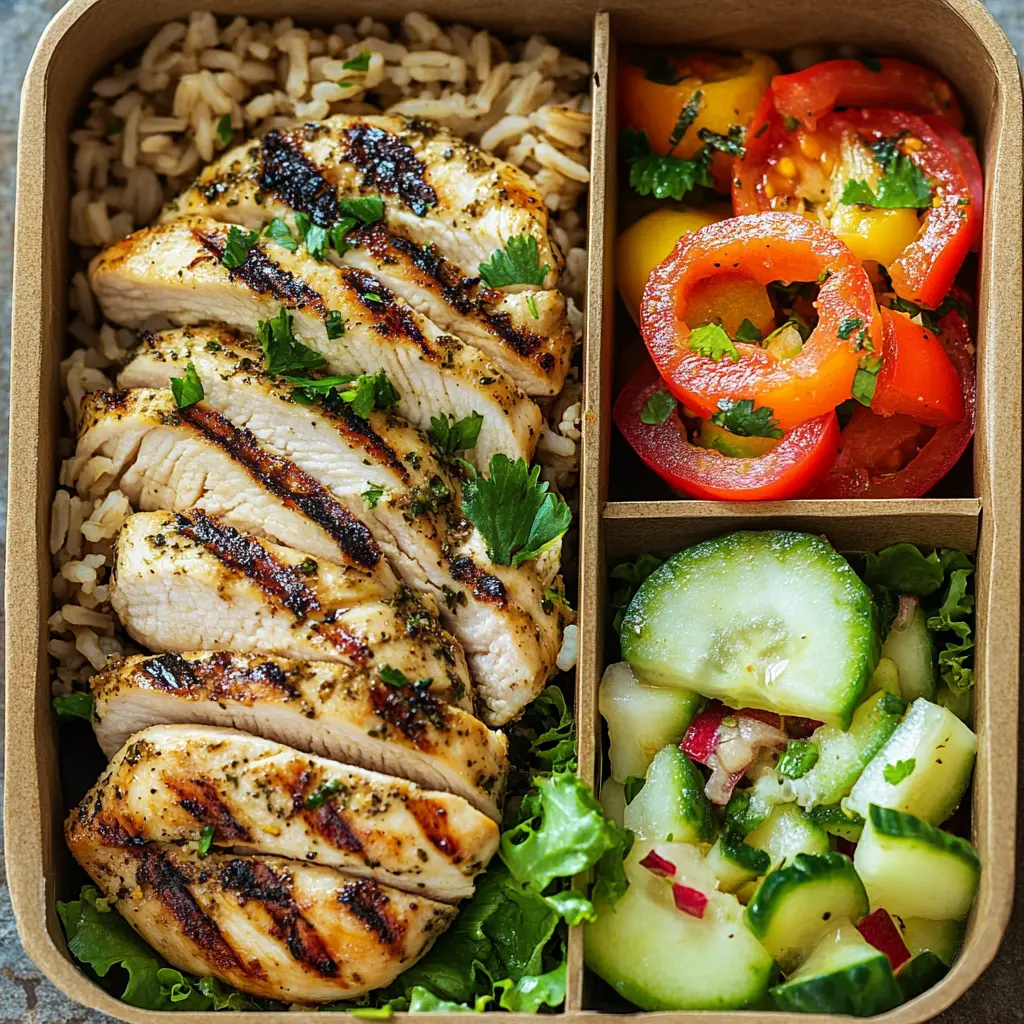
Portion Control Box Lunch
The key to a successful box lunch is portion control, ensuring each component satisfies hunger without overeating. Use these guidelines:
- Protein: 3-4 ounces of lean protein like chicken, tofu, or eggs.
- Grains: 1/2 to 1 cup of whole grains or a single sandwich serving.
- Vegetables and Fruits: Fill at least half the box with colorful, fresh produce.
- Snacks or Treats: Add a small portion of nuts, chips, or a dessert for variety.
This balance ensures that your box lunch is nutritious and filling.
Essential Components Box Lunch
A well-rounded box lunch should include these essential components:
- Main Dish: The centerpiece of the meal, such as a sandwich, salad, or bento-style entree.
- Side Dish: Complementary items like fresh fruit, roasted vegetables, or a small pasta salad.
- Snack: A handful of trail mix, cheese cubes, or crackers for a quick energy boost.
- Dessert: A small, sweet treat such as a cookie, brownie, or a piece of dark chocolate.
- Beverage: Include a drink like water, juice, or tea to complete the meal.
Creative Combinations Box Lunch
Elevate your box lunch by combining flavors and textures creatively. Here are some ideas:
- Mediterranean Theme: Hummus, pita bread, falafel, Greek salad, and baklava.
- Tex-Mex Style: A chicken wrap, tortilla chips with guacamole, and a mango salsa cup.
- Breakfast Box: A boiled egg, mini bagel with cream cheese, yogurt, and a fresh fruit cup.
These combinations not only add variety but also make the meal visually appealing and enjoyable.
Presentation Matters
Packing a box lunch isn’t just about taste—it’s also about presentation. Tips for a visually appealing box lunch:
- Use compartmentalized containers to separate items and maintain freshness.
- Add colorful ingredients like bell peppers, berries, or carrots for a vibrant look.
- Use garnishes like herbs, lemon wedges, or edible flowers for an elegant touch.
A well-packed box lunch is as satisfying to the eyes as it is to the stomach.
Box Lunch Ideas for Different Needs
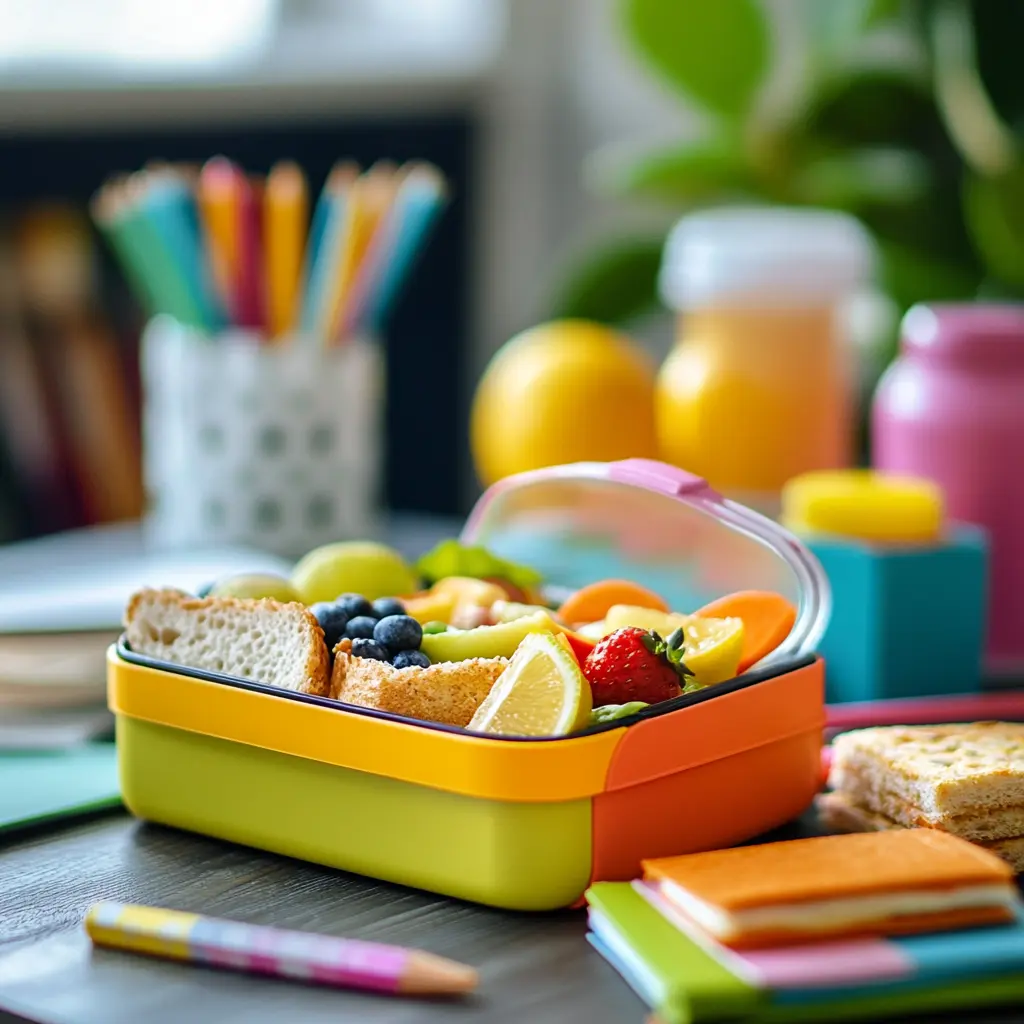
Work Lunches
For busy professionals, a thoughtfully packed box lunch can make all the difference during a hectic day. Consider these ideas:
- Grain Bowls: Quinoa or brown rice topped with grilled chicken, roasted vegetables, and a lemon-tahini dressing.
- Wraps: Turkey and avocado or hummus and roasted vegetables wrapped in a whole-grain tortilla.
- Salad Jars: Layered salads in mason jars with the dressing on the bottom to keep ingredients fresh until ready to eat.
Pair these with a small container of mixed nuts or fresh fruit for a complete meal.
Kids’ School Lunches
Box lunches for kids should be fun, nutritious, and easy to eat. Here are some playful options:
- DIY Lunchables: Sliced cheese, deli meat, and crackers paired with apple slices and baby carrots.
- Mini Wraps or Sliders: Bite-sized sandwiches filled with cream cheese and cucumber or ham and cheese.
- Themed Lunches: Shape sandwiches into stars or hearts and include colorful fruits like grapes, blueberries, or orange slices.
Adding a handwritten note or fun stickers to the box can make lunch even more special.
Event and Catering Options
Box lunches are a practical and elegant choice for events such as meetings, picnics, or corporate gatherings. Popular options include:
- Gourmet Sandwiches: Served with a side salad, chips, and a brownie.
- Charcuterie Boxes: Individual portions of cheese, cured meats, olives, and crackers.
- Vegetarian Bento Boxes: Rice, tofu, steamed vegetables, and edamame with a small fruit salad.
These individually packed meals are convenient, reduce cleanup, and can be customized for dietary restrictions.
Travel-Friendly Options
When on the road, a portable and mess-free box lunch is essential. Ideas for travel include:
- Hearty Wraps: Sturdy wraps filled with chicken Caesar salad or roasted vegetables.
- Snack Packs: Hard-boiled eggs, cheese sticks, dried fruit, and crackers.
- Pasta Salad: A Mediterranean-style pasta salad with olives, cherry tomatoes, and feta cheese, served cold.
Travel-friendly containers with secure lids help prevent spills and keep the food fresh.
Special Diets and Allergies
Box lunches can easily accommodate special diets:
- Gluten-Free: Grilled chicken with quinoa salad and roasted vegetables.
- Vegan: A chickpea and avocado wrap with a side of hummus and fresh veggies.
- Low-Carb: Grilled salmon with a side of mixed greens and hard-boiled eggs.
Customizing box lunches ensures everyone has a meal they can enjoy, no matter their dietary needs.
Tips for Keeping Box Lunches Fresh
Proper Storage
Maintaining the freshness of a box lunch starts with proper storage:
- Refrigeration: Keep perishable items like meat, dairy, and fresh produce in the refrigerator until ready to eat. Use insulated lunch bags with ice packs for portability.
- Separation: Store sauces, dressings, and wet items in separate containers to prevent sogginess. Add them just before eating.
- Freezing: For make-ahead meals, freeze items like wraps or baked goods and thaw them overnight in the refrigerator.
Choosing the Right Container
The right container can significantly impact the quality and freshness of your box lunch. Consider these options:
- Bento Boxes: Compartmentalized containers that keep ingredients separate and fresh.
- Airtight Containers: Prevents air from spoiling food and maintains flavors.
- Insulated Lunch Boxes: Helps regulate temperature, keeping cold items chilled and hot items warm.
Look for reusable, eco-friendly containers to reduce waste while ensuring durability.
Using Fresh Ingredients
The quality of your ingredients directly affects the freshness of your box lunch. Tips include:
- Seasonal Produce: Use fresh, in-season fruits and vegetables for the best taste and texture.
- Cook Just Before Packing: Prepare proteins and other cooked items close to packing time to preserve flavor.
- Pre-Washed Greens: Use washed and dried greens to avoid excess moisture that can lead to wilting.
Packing Techniques
Packing a box lunch strategically helps retain freshness:
- Layering: Place sturdy items like grains or proteins at the bottom and delicate items like greens or toppings on top.
- Wrap Items Individually: Wrap sandwiches or wraps in parchment paper to keep them intact.
- Use Ice Packs: For lunches that require refrigeration, include a reusable ice pack to maintain a cool temperature.
Timing Tips
- Pack lunches the night before to save time, but avoid assembling items like salads or sandwiches with wet ingredients until morning.
- Store the lunch box in the refrigerator immediately after packing to minimize exposure to room temperature.
With these tips, your box lunch will stay fresh, flavorful, and ready to enjoy, no matter where you’re headed.
Sustainability in Box Lunches
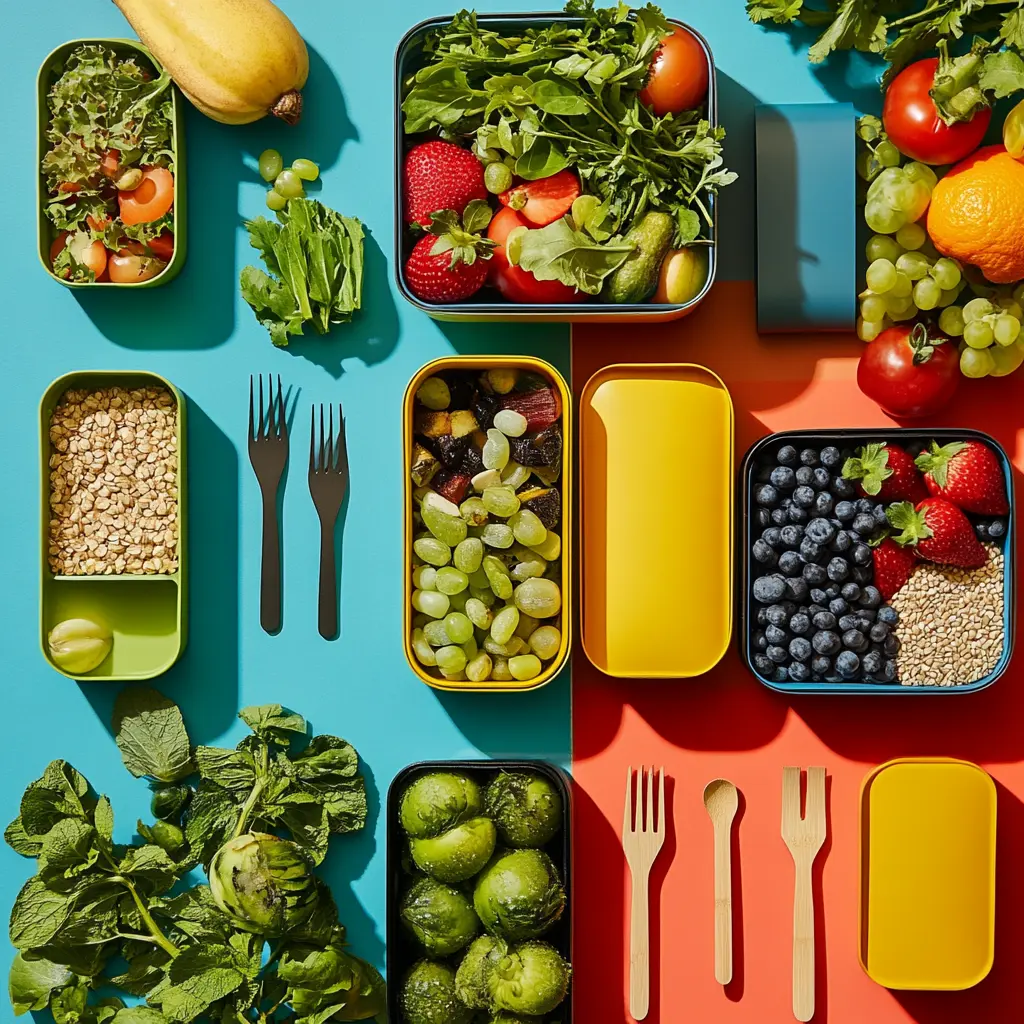
Eco-Friendly Packaging
Switching to sustainable packaging for box lunches reduces environmental impact without compromising convenience. Consider these options:
- Reusable Containers: Opt for durable bento boxes, glass containers, or stainless-steel lunch boxes instead of single-use plastic.
- Compostable Packaging: Use biodegradable wraps, paper bags, or plant-based containers that break down naturally.
- Wax Paper Wraps: A reusable and eco-friendly alternative to plastic wrap for sandwiches or wraps.
Using sustainable packaging also adds a modern, eco-conscious touch, especially for catered events or corporate lunches.
Reducing Food Waste
Efficient planning and packing can minimize food waste associated with box lunches. Here’s how:
- Portion Control: Pack appropriate serving sizes to avoid leftovers.
- Use Leftovers Creatively: Incorporate leftovers from dinner, like roasted chicken or cooked grains, into box lunches.
- Compost Food Scraps: Collect fruit peels, vegetable trimmings, and other scraps for composting.
For catered events, consider offering customizable box lunches to prevent guests from discarding items they don’t prefer.
Choosing Sustainable Ingredients
The ingredients you choose can also contribute to a more sustainable lunch:
- Seasonal and Local Produce: Reduces the carbon footprint by minimizing transportation needs.
- Ethically Sourced Proteins: Opt for sustainably caught seafood or free-range poultry.
- Plant-Based Options: Incorporate vegetarian or vegan meals, which have a lower environmental impact than meat-based options.
Supporting Sustainable Brands
Purchasing from brands committed to sustainability supports a greener future. Look for:
- Certified Organic Products: Free from harmful pesticides and chemicals.
- Fair Trade Items: Ensures fair wages and ethical labor practices for farmers and producers.
- Environmentally Conscious Retailers: Many companies prioritize eco-friendly practices and packaging for their products.
Bulk Preparation for Efficiency Box Lunch
Preparing box lunches in bulk reduces packaging waste and streamlines the process:
- Batch Cooking: Prepare ingredients like grains, proteins, or roasted vegetables in advance to reduce time and energy consumption.
- Shared Containers: For group settings, pack sides like salads or fruit in shared containers rather than individual portions.
Embracing sustainability in box lunches is a small but impactful step toward reducing waste, protecting the environment, and supporting responsible food systems.
FAQs Box Lunch
What should a box lunch include?
A balanced box lunch typically includes:
- Main Dish: A sandwich, salad, wrap, or grain bowl.
- Side Dish: Fresh fruit, roasted vegetables, or a small pasta salad.
- Snack: Nuts, crackers, or a small bag of chips.
- Dessert: A cookie, brownie, or piece of chocolate.
- Beverage: Water, juice, or a small bottle of tea.
By incorporating a mix of proteins, grains, vegetables, and a treat, you can create a satisfying and nutritious meal.
Are box lunches healthy?
Box lunches can be very healthy when thoughtfully prepared. Focus on:
- Lean Proteins: Grilled chicken, tofu, or legumes.
- Whole Grains: Brown rice, quinoa, or whole-grain bread.
- Fresh Produce: Seasonal fruits and vegetables for vitamins and fiber.
Avoid processed foods and sugary snacks to keep the lunch nutritious.
How do I keep a box lunch fresh?
To keep your box lunch fresh:
- Use Insulated Containers: Helps maintain temperature for hot or cold items.
- Pack Separately: Store wet ingredients like dressings in separate containers to prevent sogginess.
- Refrigerate or Add Ice Packs: Keep the lunch cool until mealtime.
Can box lunches cater to dietary restrictions?
Yes, box lunches are highly customizable and can easily accommodate:
- Vegetarian or Vegan Diets: Plant-based proteins, grains, and vegetables.
- Gluten-Free Options: Use gluten-free bread, wraps, or pasta.
- Low-Carb Choices: Focus on salads, grilled proteins, and non-starchy vegetables.
Communicate dietary needs when ordering from a vendor or preparing lunches for a group.
Are box lunches cost-effective?
Box lunches are often more affordable than dining out, especially when made at home or ordered in bulk for events. By purchasing ingredients in bulk and minimizing food waste, you can create high-quality lunches at a lower cost.
Can box lunche be environmentally friendly?
Absolutely. To make box lunches eco-friendly:
- Use reusable containers or biodegradable packaging.
- Source ingredients locally and choose organic or sustainable options.
- Minimize waste by preparing portions carefully and composting scraps.
Conclusion
Box lunches are a convenient, versatile, and enjoyable solution for meals on the go. Whether you’re packing a lunch for work, creating fun meals for kids, or catering an event, box lunches offer endless possibilities to suit any occasion or dietary need.
From classic sandwiches to gourmet bento boxes, these portable meals can be customized to balance taste, nutrition, and presentation. By incorporating fresh ingredients, thoughtful packing techniques, and sustainable practices, you can elevate the simple box lunch into a satisfying and eco-friendly dining experience.
With the tips and ideas shared in this guide, you’re ready to explore creative ways to enjoy and share box lunches. Start planning your next meal today and experience the convenience and deliciousness that a well-packed box lunch can bring!
